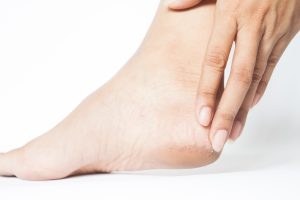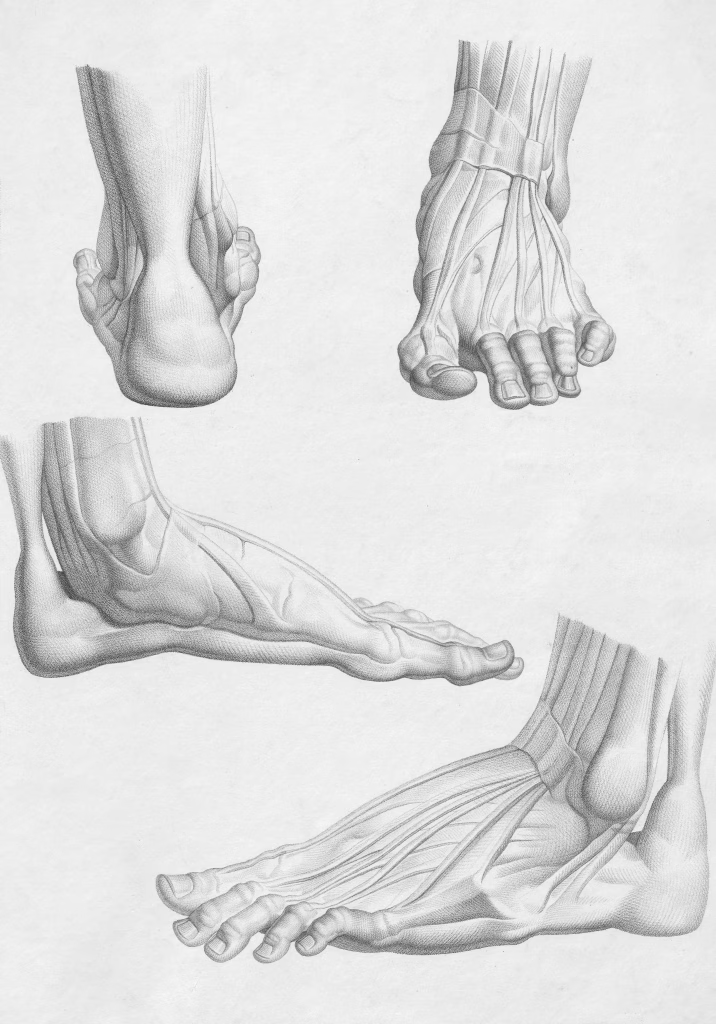Flat Feet Treatment Palm Beach Gardens, FL
Flat Feet Treatment at Motion Orthopedic & Podiatry Institute
Motion Orthopedic & Podiatry Institute provides specialized flat feet treatment to help patients manage this common condition’s discomfort, pain, and mobility issues. Flat feet, also known as fallen arches or pes planus, can affect people of all ages and lead to problems with balance, posture, and overall foot health. Our team of experienced podiatrists and orthopedic specialists works closely with each patient to create personalized treatment plans to restore function, reduce pain, and improve quality of life.
What are Flat Feet?
Flat feet occur when the arches of the feet do not develop properly or collapse over time. In a healthy foot, the arch provides support, absorbs shock, and helps distribute weight evenly during movement. When the arch is flattened, the entire sole touches the ground, leading to various complications, including pain, instability, and difficulty walking or standing for long periods.
Flat feet can be classified into two main types:
- Flexible Flat Feet: The arches appear normal when the foot is not bearing weight but flatten when the foot is on the ground. This is the most common type and often starts in childhood or adolescence.
- Rigid Flat Feet: In this type, the arches are absent even when the foot is not bearing weight. This condition is usually more severe and can result from bone or joint issues, injuries, or underlying medical conditions.
Causes of Flat Feet
Flat feet can be caused by various factors, including:
- Genetics: Many people inherit flat feet from their parents. You will likely develop the condition if flat feet run in your family.
- Weak or Stretched Tendons: The posterior tibial tendon, which supports the arch, can become weakened or damaged, leading to the arch’s collapse.
- Injury: Trauma or injury to the foot or ankle, such as fractures or sprains, can cause the arch to collapse.
- Arthritis: Rheumatoid arthritis or osteoarthritis can lead to the deterioration of the foot’s joints and ligaments, contributing to flat feet.
- Obesity: Excess weight can put additional stress on the feet, weakening the structures that support the arch and leading to flat feet.
- Aging: Over time, the tendons and ligaments in the feet can lose strength and flexibility, causing the arches to collapse.
- Medical Conditions: Certain conditions, such as diabetes, cerebral palsy, and Down syndrome, can increase the risk of developing flat feet.
Symptoms of Flat Feet
Not all individuals with flat feet experience symptoms, but for those who do, the condition can cause a variety of issues, including:
- Foot Pain: Pain is often felt in the arch, heel, or ankle due to strain on the foot’s ligaments and tendons.
- Swelling: Swelling along the inside of the ankle is common, especially in cases where the posterior tibial tendon is affected.
- Tired Feet: Individuals with flat feet often experience fatigue or discomfort in their feet after standing or walking for extended periods.
- Knee, Hip, or Back Pain: Flat feet can affect the body’s alignment, straining the knees, hips, and lower back.
- Difficulty Walking or Running: People with flat feet may have difficulty maintaining balance or performing high-impact activities such as running.
If left untreated, flat feet can lead to more severe complications, including plantar fasciitis, Achilles tendonitis, and bunions.
Our Approach to Flat Feet Treatment
At Motion Orthopedic & Podiatry Institute, we take a personalized approach to treating flat feet. After a thorough examination, our team will work with you to create a tailored treatment plan that addresses your specific needs and symptoms. Depending on the severity of the condition and its impact on your daily life, we offer both non-surgical and surgical options.
Non-Surgical Flat Feet Treatments
For most patients, flat feet can be managed effectively with non-surgical treatments. These conservative treatments focus on relieving pain, improving foot function, and preventing further complications. Common treatments include:
- Custom Orthotics: One of the most effective treatments for flat feet is using custom-made orthotic inserts. These inserts provide arch support and help distribute weight evenly across the foot, reducing pain and improving alignment. Unlike over-the-counter insoles, custom orthotics are specifically designed to fit your feet and address your unique biomechanical needs.
- Supportive Footwear: Wearing shoes that provide good arch support and cushioning is essential for managing flat feet. Our team will recommend appropriate footwear options that reduce foot strain and help alleviate pain. Shoes with a wide toe box, firm heel counter, and shock-absorbing soles are particularly beneficial for individuals with flat feet.
- Physical Therapy: Physical therapy can be highly effective in strengthening the muscles and tendons that support the arch. Our physical therapists will design a personalized exercise program that includes stretching, strengthening, and balance exercises to improve foot function and reduce symptoms.
- Weight Management: For overweight patients, losing weight can help reduce the strain on the feet and improve symptoms. Our team may provide guidance on lifestyle changes, including diet and exercise recommendations, that can aid in weight management.
- Anti-Inflammatory Medications: Over-the-counter nonsteroidal anti-inflammatory drugs (NSAIDs), such as ibuprofen, may be recommended to help reduce pain and inflammation associated with flat feet.
- Activity Modification: If high-impact activities like running or jumping exacerbate your symptoms, we recommend modifying your activities to avoid aggravating the condition. Low-impact exercises such as swimming or cycling can be beneficial alternatives.
Surgical Flat Feet Treatments
In cases where non-surgical treatments are ineffective or if the condition has progressed to the point where it causes significant pain or deformity, surgical intervention may be necessary. At Motion Orthopedic & Podiatry Institute, our skilled surgeons are experienced in performing various procedures to correct flat feet and restore normal foot function.
- Tendon Repair: If the posterior tibial tendon is damaged or weakened, surgery may be required to repair or reconstruct the tendon. This procedure helps restore support to the arch and improve foot function.
- Osteotomy: This surgical procedure involves cutting and realigning the foot bones to correct the arch. For more severe cases of flat feet, osteotomy is often combined with tendon repair or ligament reconstruction.
- Arthrodesis (Joint Fusion): In cases of advanced arthritis or severe deformity, joint fusion surgery may be recommended. This procedure involves fusing the bones in the affected joint to stabilize the foot and alleviate pain.
- Lateral Column Lengthening: This procedure corrects flat feet caused by a collapsed arch. It involves lengthening the outside of the foot by grafting bone from another part of the body or using a synthetic graft. This helps restore the arch and improve foot alignment.
- Subtalar Arthroereisis: This minimally invasive procedure involves inserting a small implant into the subtalar joint to prevent excessive motion and arch collapse. The implant helps support the arch and improve foot stability.
- Recovery After Surgery: Recovery times for flat foot surgery vary depending on the type of procedure performed. Most patients must wear a cast or brace for several weeks to allow the foot to heal properly. Physical therapy is typically recommended after surgery to help restore strength, flexibility, and mobility to the foot.

The Flat Feet Treatment Process
At Motion Orthopedic & Podiatry Institute, we take a comprehensive and patient-centered approach to flat feet treatment. Here’s what you can expect during your treatment journey:
- Initial Consultation and Diagnosis: Your first visit will include a thorough physical examination of your feet and a review of your medical history and symptoms. We may use X-rays, ultrasound, or other imaging techniques to assess the severity of the condition and determine the best course of treatment.
- Personalized Treatment Plan: Based on our assessment, we will create a customized treatment plan that may include orthotics, physical therapy, lifestyle changes, or surgery, depending on the severity of your flat feet and overall health goals.
- Follow-Up Care: Whether you undergo non-surgical treatment or surgery, regular follow-up visits are essential to monitor your progress and ensure that your treatment is effective. Our team will adjust your treatment plan to help you achieve the best possible outcome.
Why Choose Motion Orthopedic & Podiatry Institute for Flat Feet Treatment?
At Motion Orthopedic & Podiatry Institute, we are committed to providing high-quality, patient-focused care for individuals with flat feet. Here’s why patients choose us for their flat feet treatment:
- Experienced Specialists: Our team of board-certified podiatrists and orthopedic surgeons has extensive experience diagnosing and treating flat feet. We use the latest technologies and treatment techniques to ensure the best possible outcomes for our patients.
- Comprehensive Care: From conservative therapies to advanced surgical procedures, we offer a full range of treatment options for flat feet. We aim to provide personalized care that addresses your unique needs and helps you achieve lasting relief from pain and discomfort.
- State-of-the-Art Facility: Our clinic has the latest diagnostic tools and treatment technologies, allowing us to deliver exceptional care in a comfortable and supportive environment.
If you are experiencing pain or discomfort due to flat feet, the Motion Orthopedic & Podiatry Institute team is here to help. Contact us today to schedule a consultation and learn more about our flat feet treatment options. Let us help you regain your mobility and improve your quality of life.
- Orthopedic Surgery
- Podiatry Care
- Regenerative Medicine
- Sports Medicine
- Vein Treatment
- Arthroscopic & Joint Replacement Surgery:
- Knee Pain
- Shoulder Pain
- Hip Pain
- Sports Injuries
- Tendonitis and Bursitis
- Carpal Tunnel Syndrome
- Trigger Finger
- Wound Care
- Concierge Orthopaedic Services
